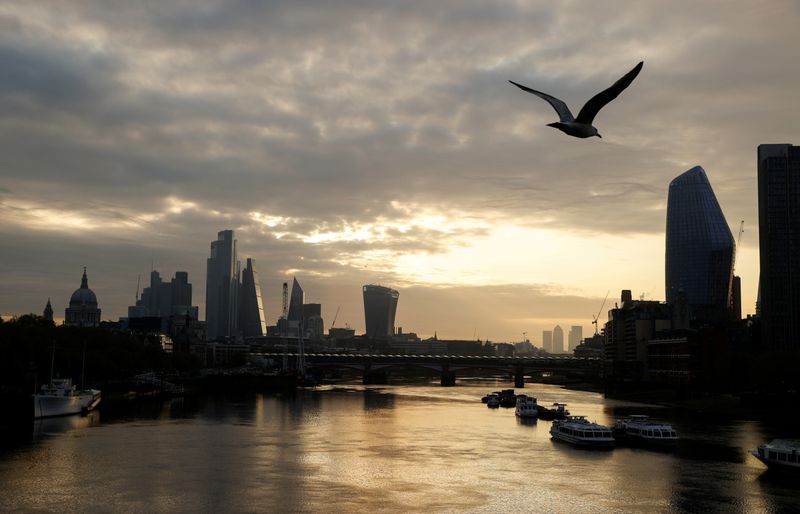LONDON (Reuters) - Biplane fliers are enjoying spectacular views of the Millennium Dome, the towering Canary Wharf financial district and the Thames Barrier for the first time as the COVID-19 lockdown frees up airspace over London for aviation enthusiasts.
Sections of east London's airspace, normally open only to planes taking off and landing at London's City airport, are now open to explore by the much smaller de Havilland Tiger Moth aircraft.
"Normally, the whole of the London airspace, around London City Airport and all the other London airports, it's very congested," said Anna Walker, who flies the biplane as a hobby.
"But at the moment there's hardly any traffic around and so we're allowed to go fly over places we don't normally go to."
London City Airport suspended flights on March 25. It hopes to resume domestic services at the end of June, with the airport aiming to restart international flights in early July.
That's become a boon for the Tiger Club, an aeroclub based outside Upminster, a suburban town to the east of London, from where Walker flies.
She said the Tiger Moth was a fun plane to fly.
"It's just delightful. I mean, it's just a classic, it's just a beauty. And everyone sees a little biplane flying around in the sky. There's something very romantic about it," she said.
She said London's air was also much clearer as a result of the lockdown, and there was no smog in a city which sometimes struggles to meet air quality standards.
"The visibility is staggering ... since the lockdown, it's noticeable how much clearer the air is," she said.

"It's a beautiful part of London as well - flying along the Thames, the Thames Barrier, and just looking at the London skyline. It's just so magic."